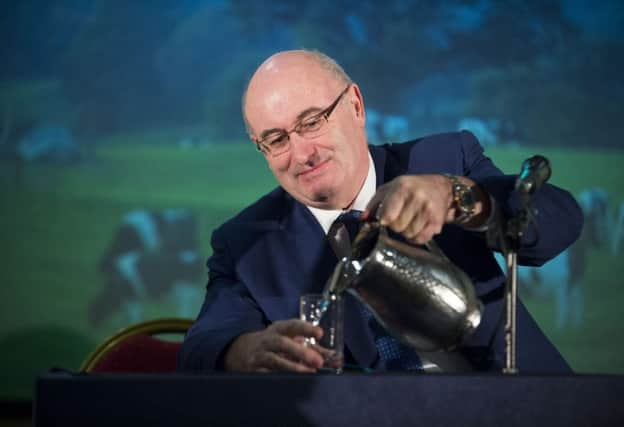Weather more than planning helped industry


At the start of the year production was surging across the EU, prompting the European Commission to warn that farmers faced a price collapse if this continued. By the end of July, thanks to the drought more than to any heeding of that advice, production had fallen back to a small annual increase.
With fodder in short supply across much of the EU, the expectation is that production will be held back through the autumn and winter.
Advertisement
Hide AdAdvertisement
Hide AdThat prices have held up reasonably well is not just down to production being kept in check in Europe. Despite steady falls since June in the Fonterra Global Dairy Trade auction price in New Zealand global markets are fairly stable. The EU has even managed to shift some its big stockpile of milk powder, built up during the last dairy crisis, without having to discount prices and risk undermining the market. However in a recent speech in Dublin the farm commissioner, Phil Hogan, made no secret of his view that it is not enough to rely on luck to avoid another price slump. Interestingly he was not blaming farmers for over production, but had processors in his sights for failing to get markets signals through to farmers.
It is a long time now since the milk marketing board era when farmers produced what they wanted with little interest in the market. However the hangover from that is still a factor in the industry. The market focus and market discipline of dairy farmers is a far cry from the intensive sector or indeed other industries outside agriculture. What Hogan was suggesting was a middle ground, but past outcomes suggest he is not always heeded by the industry. When he called for production discipline after milk quotas were scrapped he was ignored. He was also ignored earlier this year when he warned of a price slump if production increases continued. The drought across Europe meant that forecast was never tested.
This is ironic, given that Hogan is well placed to comment on the dairy sector. That comes with his background as an Irish commissioner, but more significantly his most senior adviser in Brussels was a former big player in the Irish dairy industry. Hogan and his team understand the dairy sector well, and when they say change is needed they have credibility behind them. The creation of the EU Milk Market Observatory was about giving everyone in the industry better access to global market information. That has been achieved, even if there is still too big a lag between events and publication.
Hogan wants this to be the basis for better decision making around production decisions. What he effectively wants is to see these move from decisions based around grass availability or feed prices to what the market actually wants. That is not rocket science, but it has eluded the industry for years thanks to that hangover from the easy certainty of the milk board era.
Advertisement
Hide AdAdvertisement
Hide AdThe Hogan message was that ‘market orientation and an ability to adapt to unforeseen circumstances’ were the key to future EU dairy success. He said processors must do more to ensure market signals reach farmers. The dairy sector would then run more like other businesses, with suppliers better matching what they do to the volumes and products the market wants.
This is easy to say, but seemingly difficult to deliver successfully. There have been some changes in the right direction, but there is still too great a disconnect between production and markets.
Mr Hogan said future increases in EU production would be more moderate, but he warned that volatility would remain a fact of life. His core message was the need to modernise and rationalise the relationship between farmers and processors, not least over production decisions and the link between these and markets.
The terms he wants to see coming to the fore are supply chain contracts, forward contracts, fixed price and margin contracts, and price differentiation according to volumes. These sound like management-speak, but they are effectively common sense. This would bring the industry closer to those with integrated supply chains. That is a trend the dairy and beef sectors have resisted and the intensive sector has embraced, but if the Hogan approach prevails it will be the way of the future in the dairy sector.